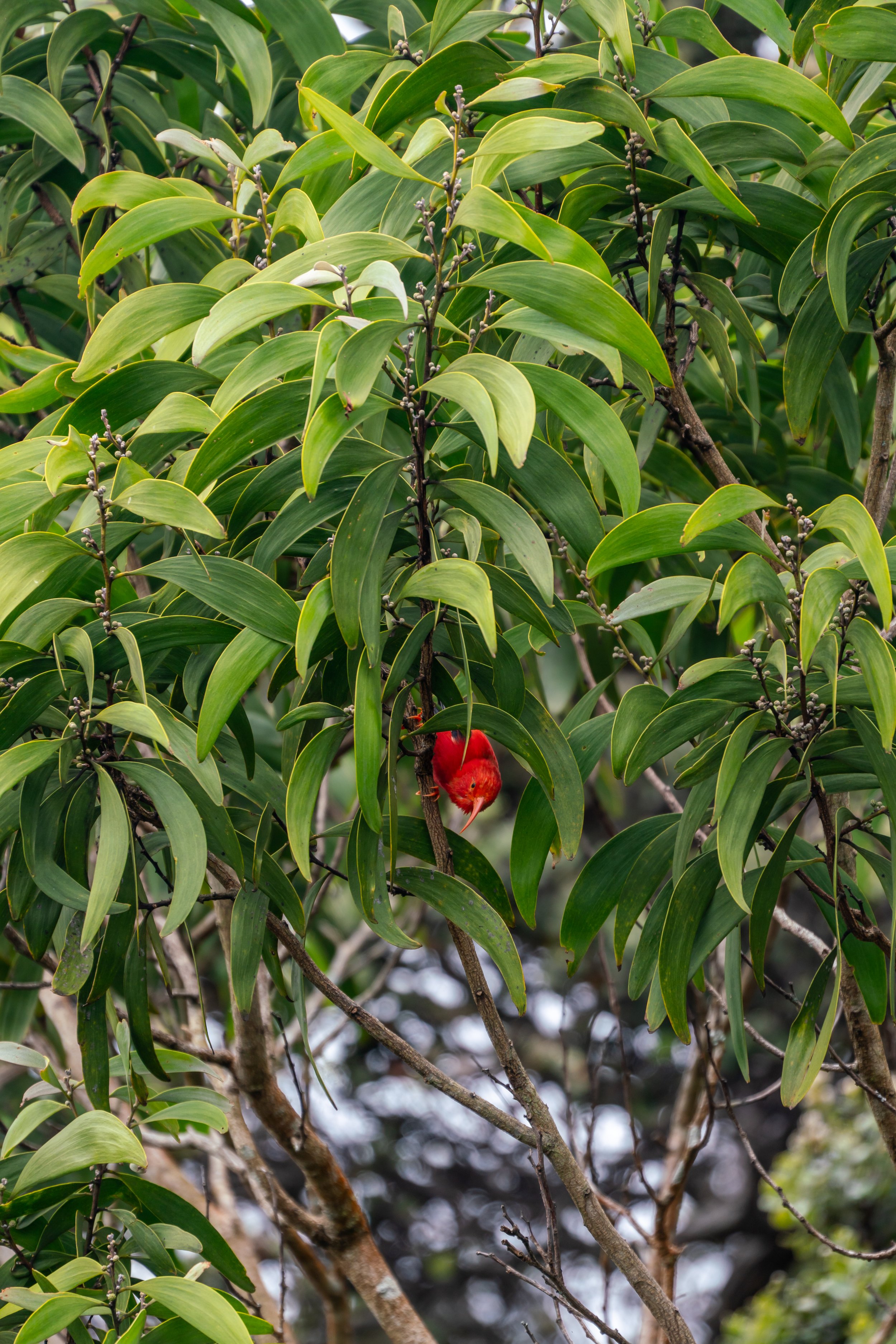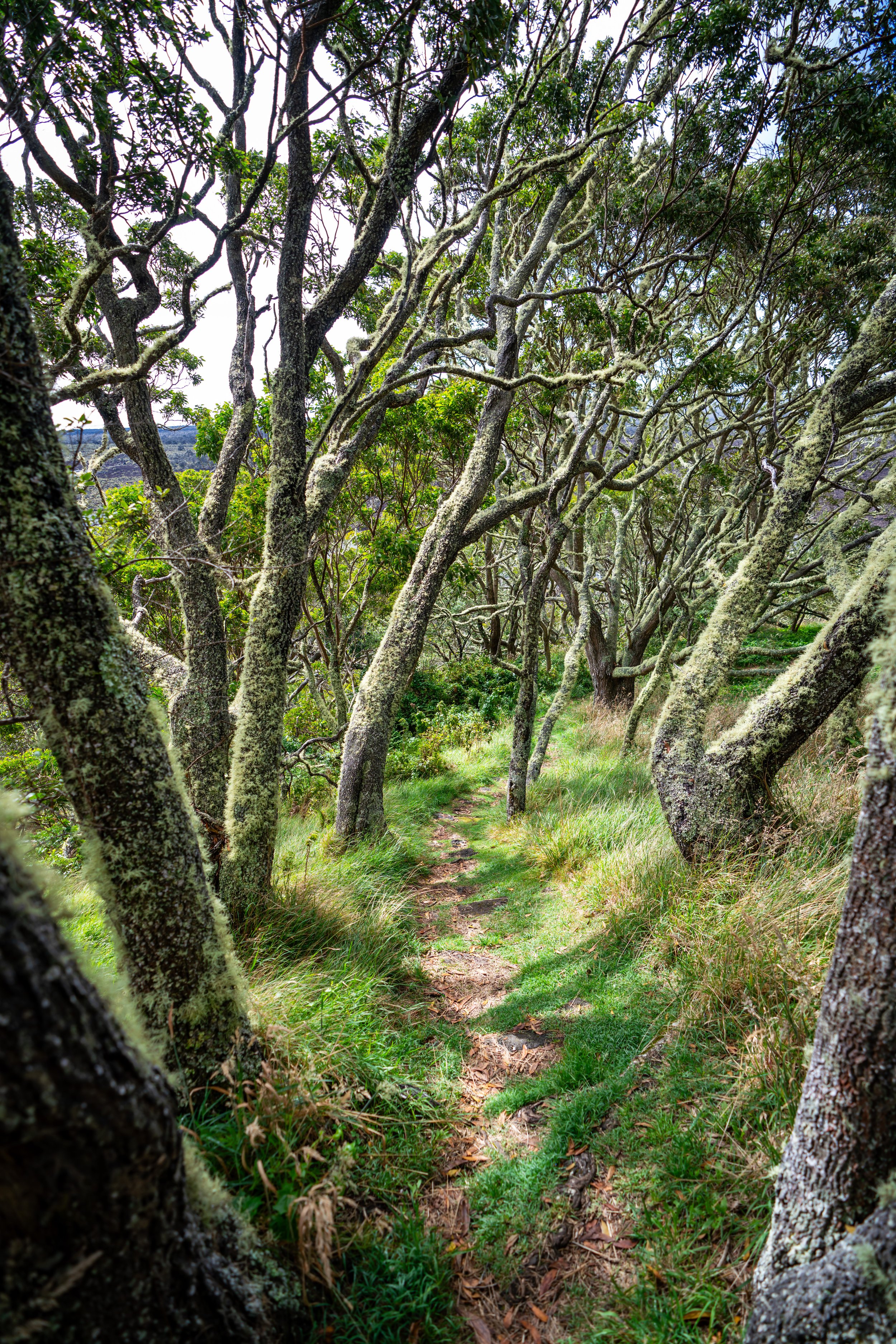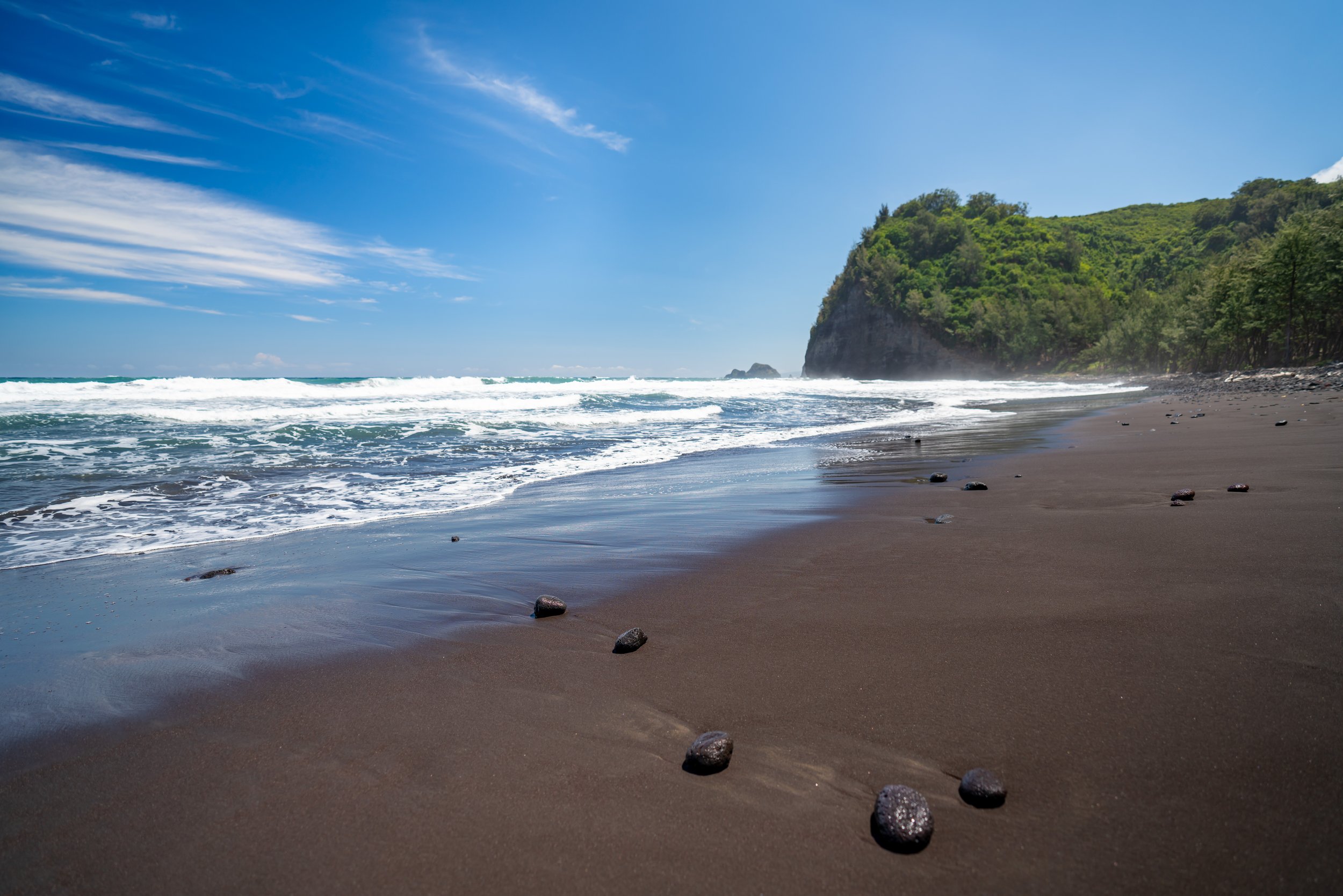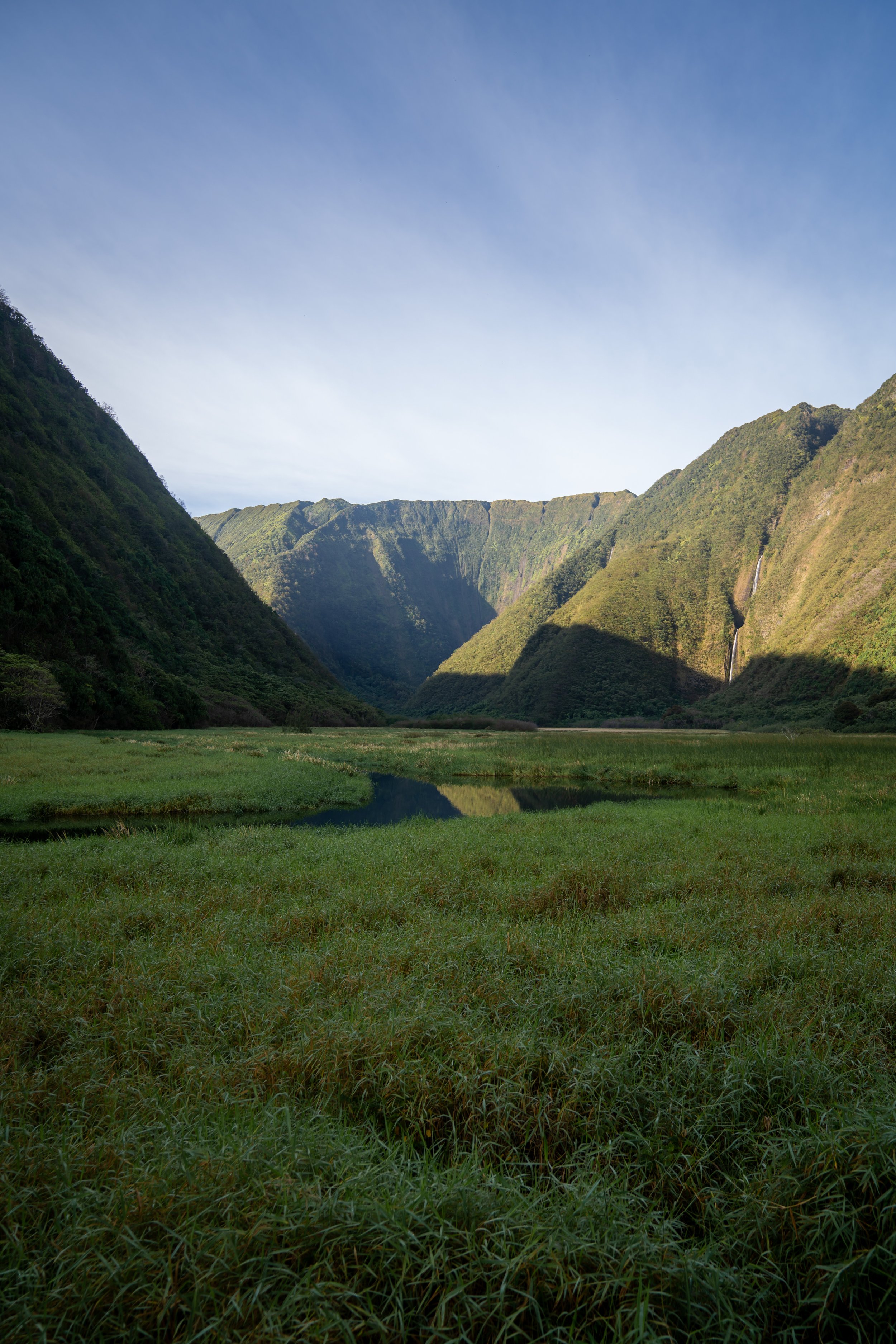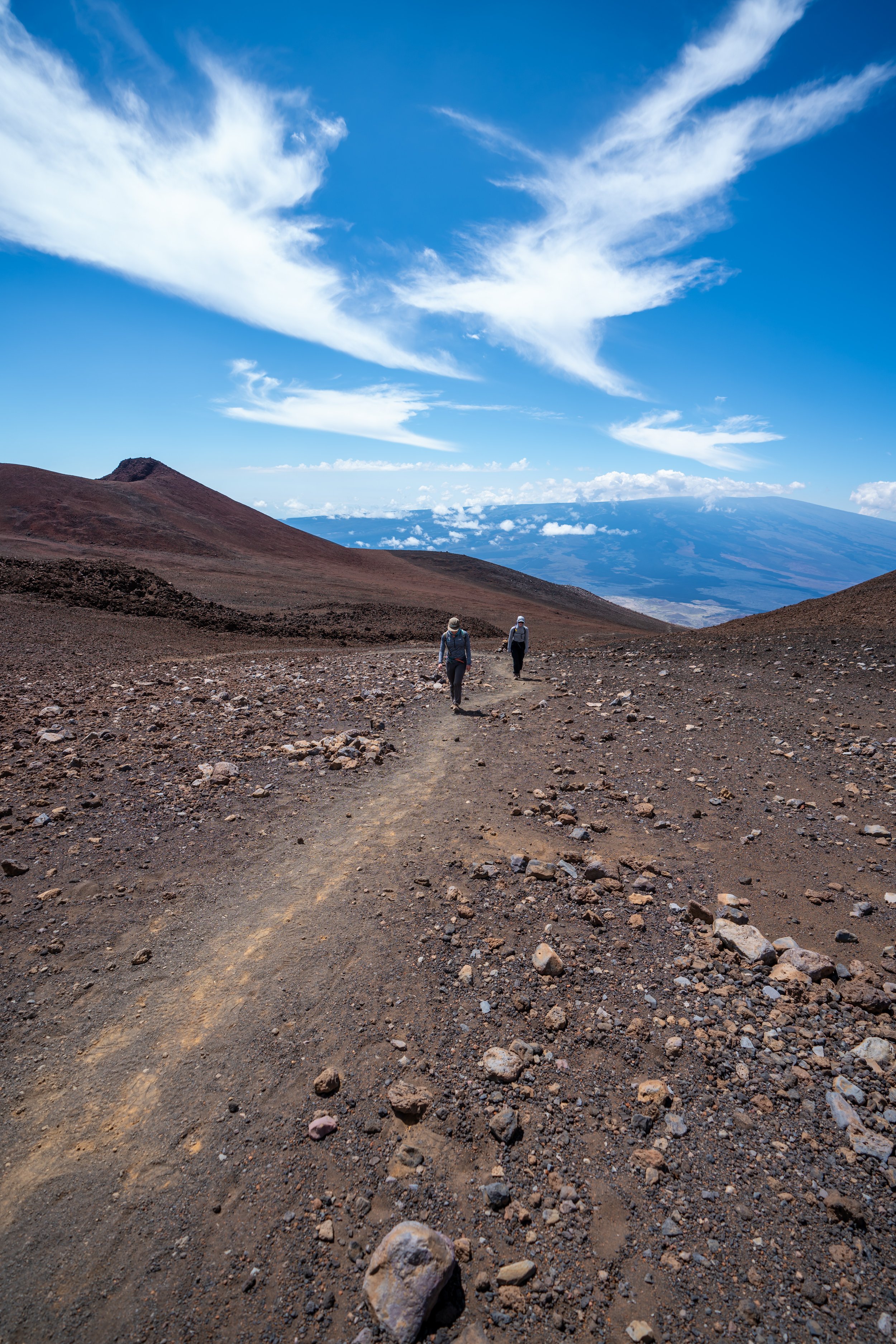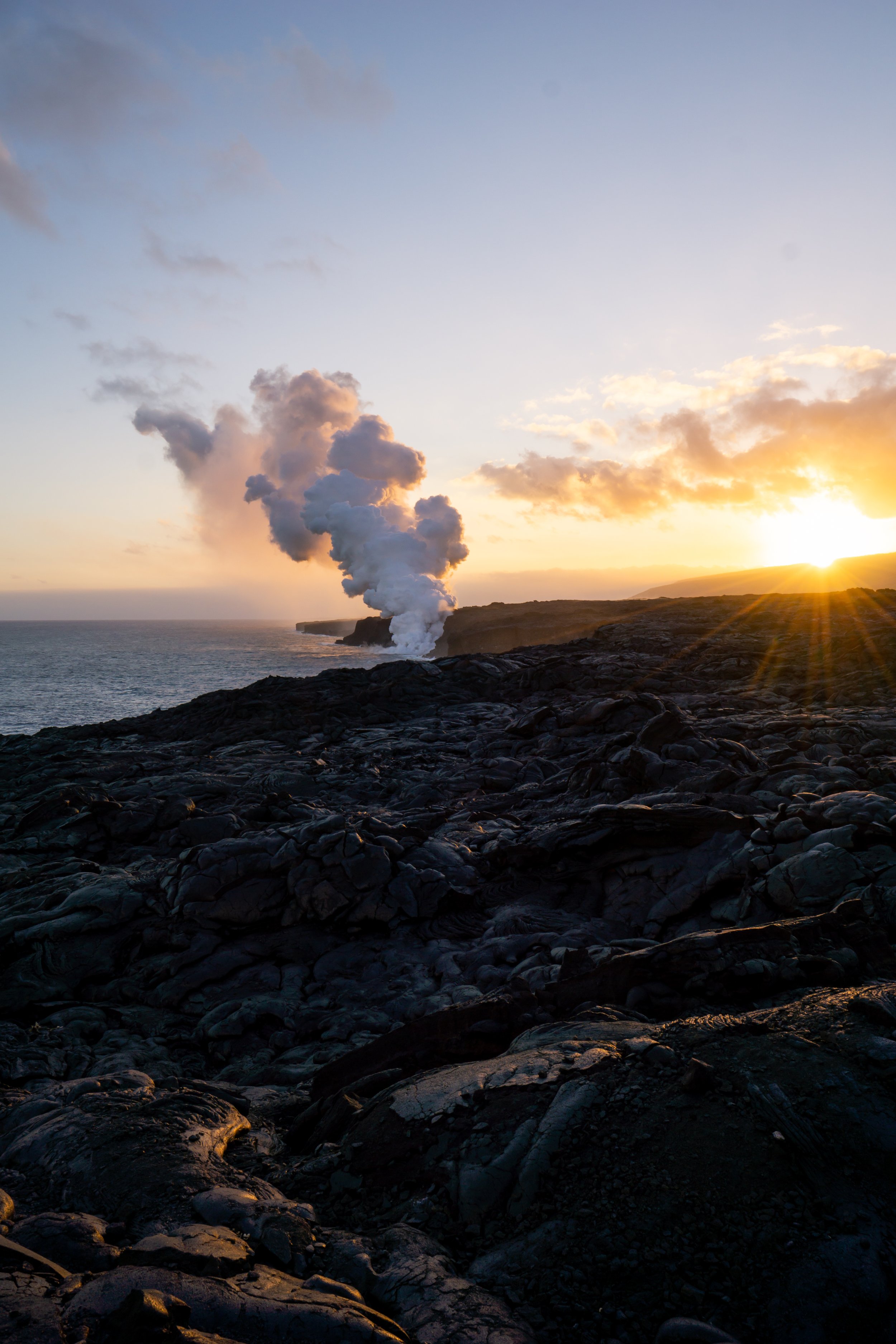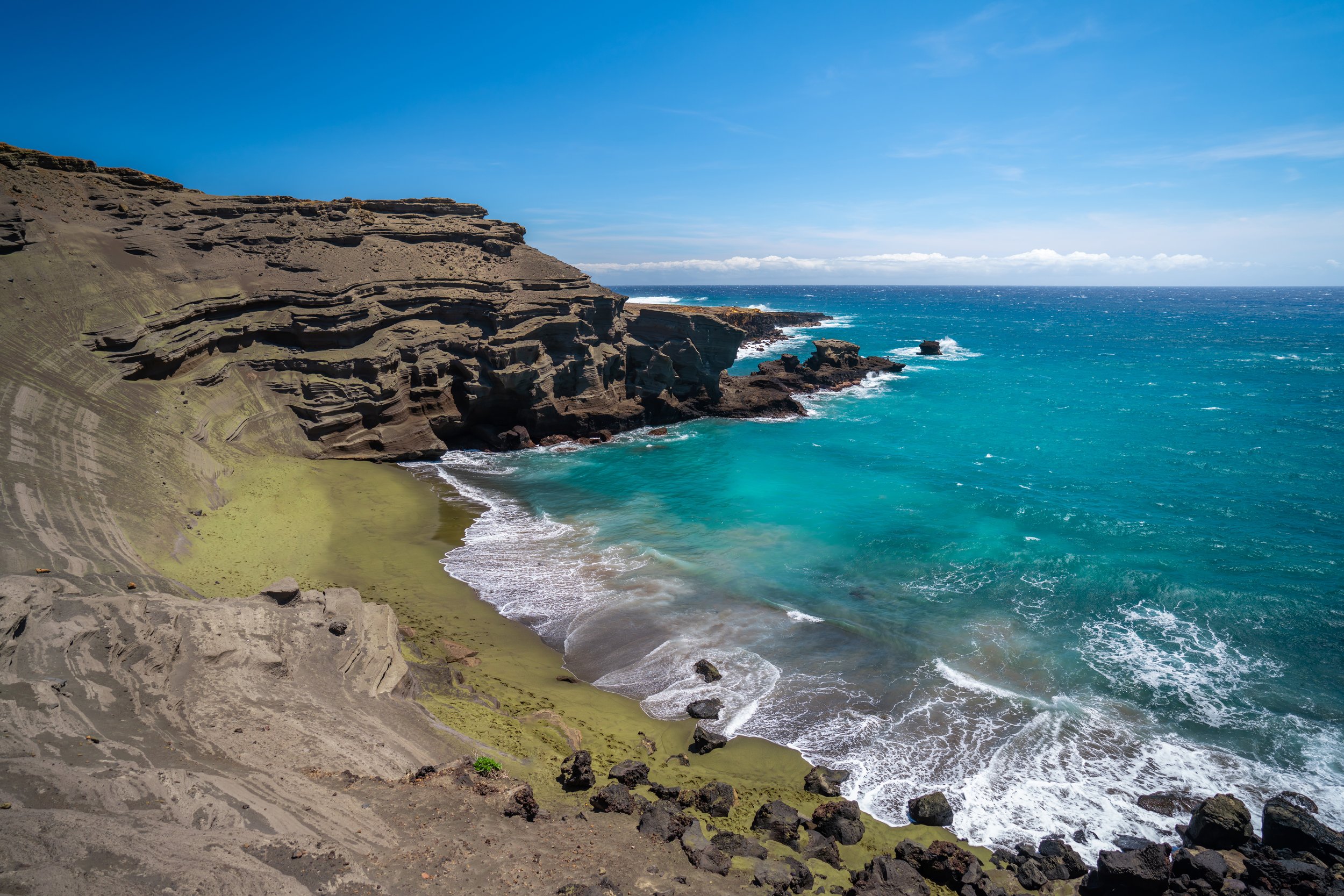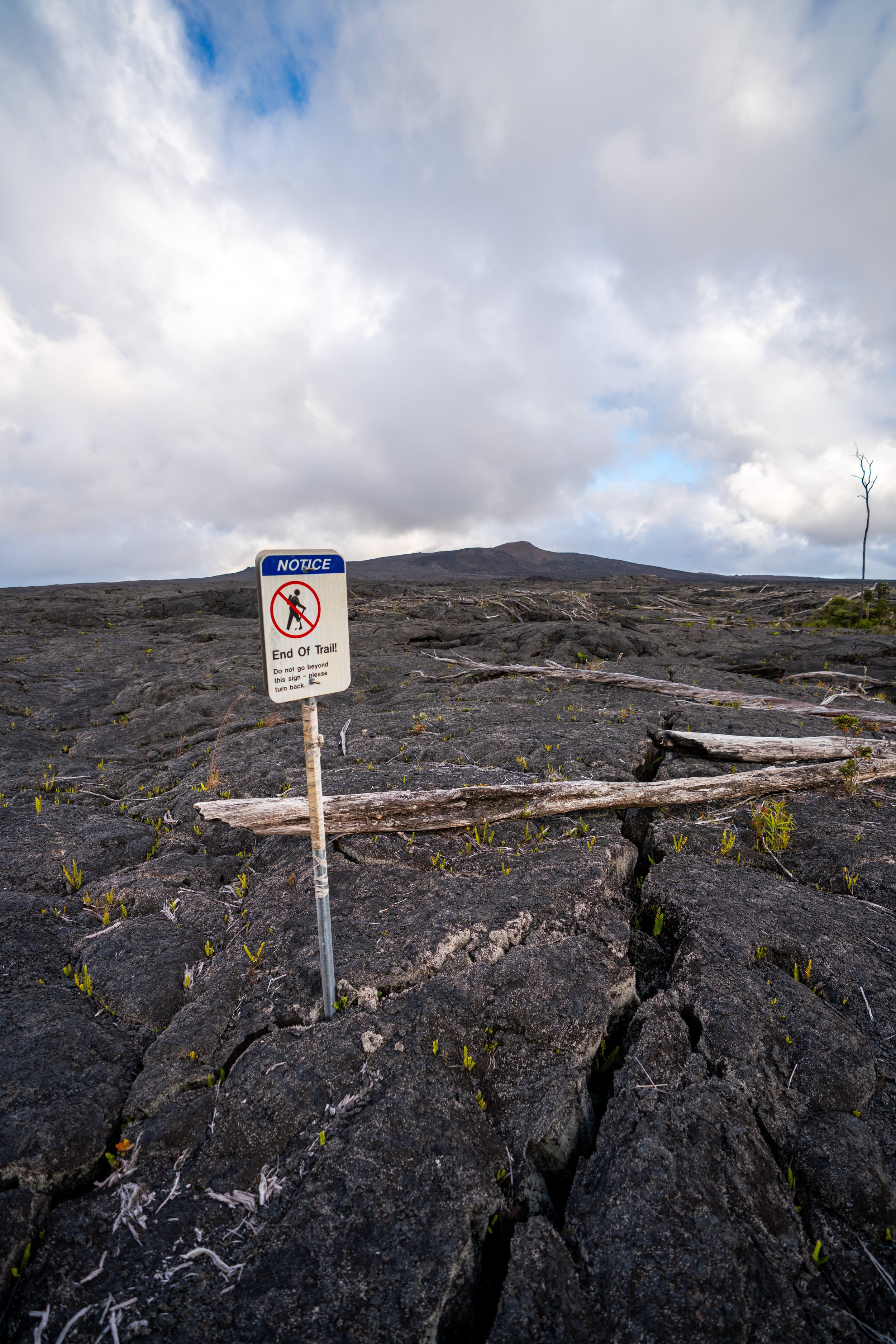Hiking the Puna Trail to Hāʻena Beach on the Big Island of Hawaiʻi
Distance (Roundtrip): 4.8 miles / 7.7 km
The Puna Trail to Hāʻena Beach on the Big Island of Hawaiʻi is about as private and secluded as a publicly accessible beach in Hawaiʻi can get!
I say this because unless you have access to one of the few private properties surrounding Hāʻena Beach, the only way to enjoy the secluded black sand beach is by hiking the 2.4-mile (3.9 km) Puna Trail in Keaʻau.
For this reason, hiking to Hāʻena Beach by way of the Puna Trail is, without a doubt, one of the best things to do on the Big Island—as long as you’re prepared for a typically very muddy adventure through the rainforest!
Puna Trailhead Parking
Parking for the Puna Trail is located at the very end of Beach Road in Keaʻau.
It’s unfortunate that I have to say this, but don’t leave valuables or any bags visible in your vehicle.
Generally speaking, the Puna Trail is a very safe place to visit, but people who get complacent or visitors who don't know any better are easy targets to take advantage of.
Google Maps Directions: Puna Trailhead
Hiking the Puna Trail to Hāʻena Beach
From start to finish, the 2.4-mile (3.9 km) Puna Trail to Hāʻena Beach is an almost entirely flat hike.
That being said, the mud through the rainforest is typically the biggest challenge when making your way out to Hāʻena.
Puna Rainforest
While you might expect a trail on the coast to parallel the ocean, the vast majority of the Puna Trail traverses through a thick rainforest canopy, which begins only 0.2 miles (0.3 km) from the trailhead.
This will essentially continue for the entire hike until the Puna Trail ends at Hāʻena Beach.
Throughout the middle sections of the hike, the Puna Trail crosses over a mix of hard pāhoehoe lava flows, along with very tricky muddy sections to navigate around.
It almost feels as if there’s no consistency between what’s easy or more challenging to hike through.
I’ve always thought that these Banyan trees would make for very beautiful photos when the light is right!
As you start to get closer to Hāʻena Beach, the Puna Trail begins paralleling a few different private properties, which is a nice mental checkpoint, as most of the rainforest can start to look the same.
If you run into this large pool of water on the trail, look to the right toward the ocean, and the trail should continue around toward a much easier crossing.
Hāʻena (Shipman Beach)
After what can feel like an endless hike through the jungle, the Puna Trail suddenly ends at the beautiful Hāʻena Black Sand Beach, also known as Keaʻau or Shipman Beach.
Typically speaking, Hāʻena Beach is one of the most quiet and secluded beaches on the Island of Hawaiʻi, which is why it’s a personal favorite that I love to revisit whenever I can!
Native Plants on the Puna Trail
Overall, the vast majority of the hike on the Puna Trail traverses through a non-native/ invasive Strawberry Guava and Autograph Tree forest.
However, at random points throughout the trail, such as the beginning before the forest and Hāʻena Beach specifically, there are a few native plants to look out for. Some of these include ʻŌhiʻa lehua, Kāwelu grass, Uluhe, ʻUhaloa, Naupaka, ʻIlima, and Niu, to name a few.
If you would like to learn more identifying these and ton of others native Hawaiian plants from across the islands, I encourage you to read more in my separate post.
Read My Separate Post: Native Hawaiian Plant Guide



